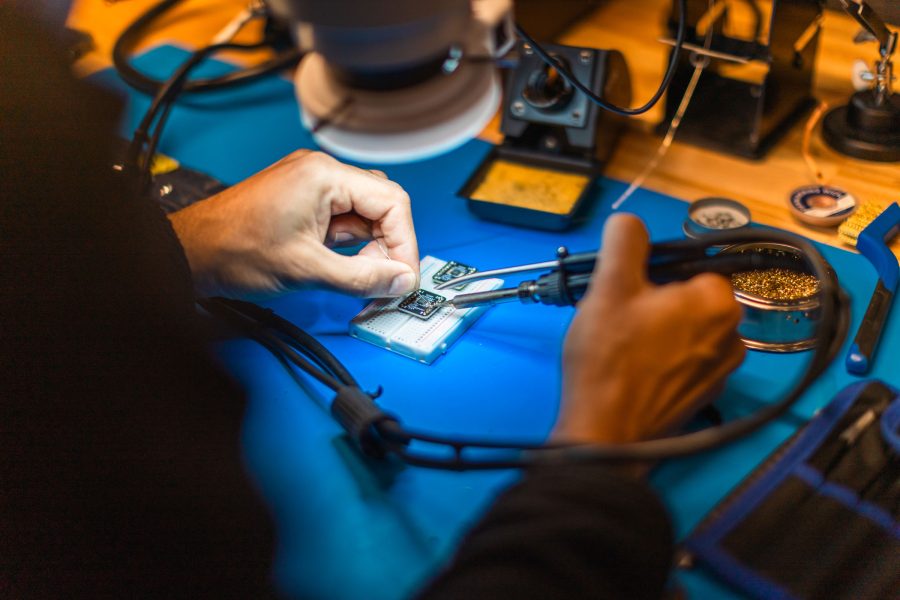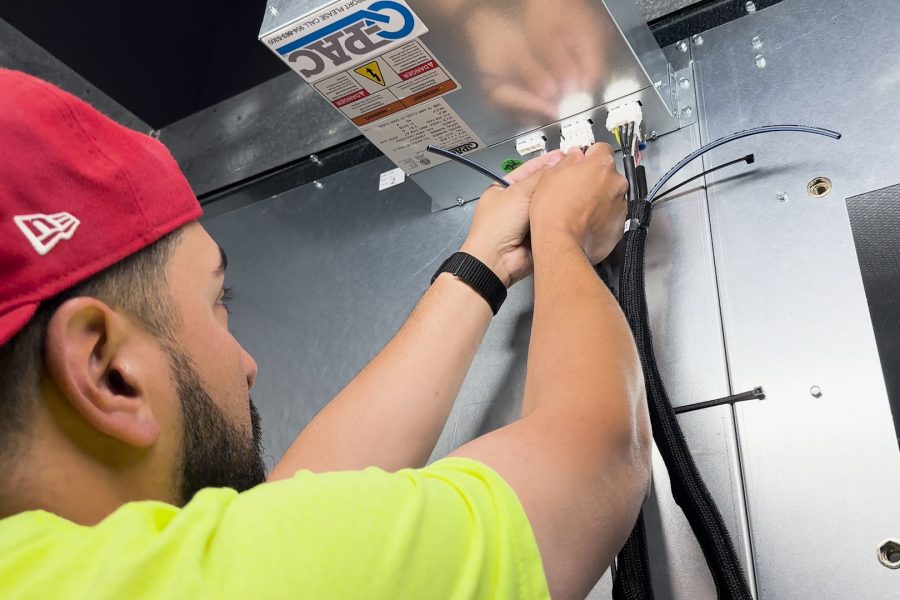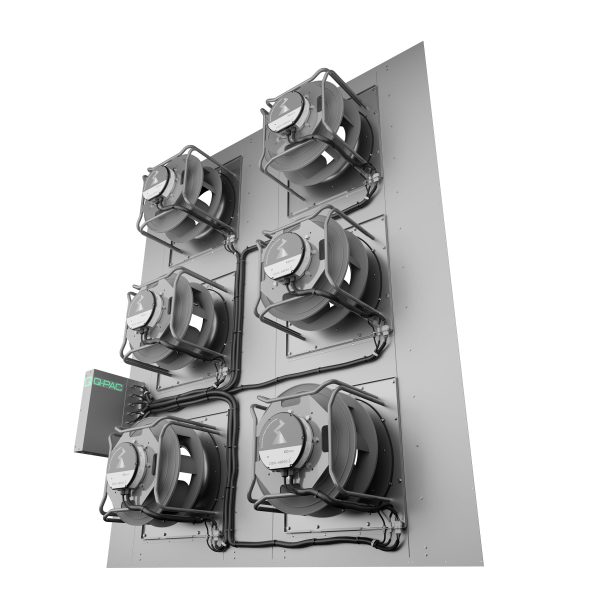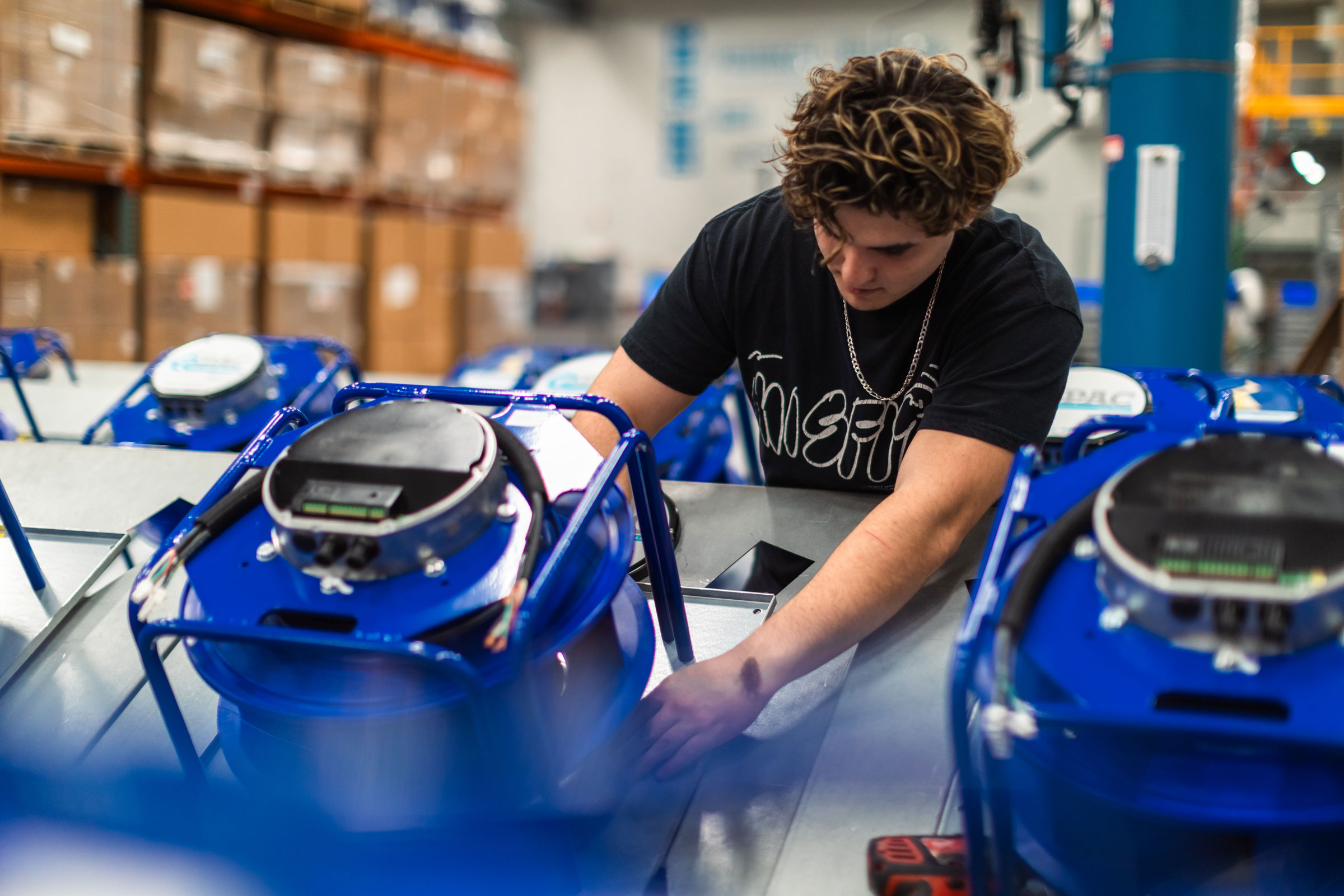Story at a glance:
- Q-PAC’s new Multimotor Plenum Fan is engineered to replace large single fans and fan arrays in commercial air handlers, swapping them for streamlined, low-maintenance, and more resilient airflow solutions.
- By establishing a platform that’s user-friendly—easy to install and simpler to operate—Q-PAC looks to bring innovation to customer challenges and achieve new levels of efficiency.
Architects designing new buildings—or redesigning elements of iconic structures—must take countless aspects into consideration as they work. The nuances of the building’s HVAC system may not necessarily rank consistently among highest priorities.
In some ways that’s changing amid shifting awareness and demand for better energy efficiency, air quality, and reliability. Nonetheless, at least one HVAC industry leader would argue that architecture and design shouldn’t be sacrificed to accommodate customized equipment and space for heating and cooling.
“When you want a nice-looking building you end up making the engineering incredibly challenging because it’s not all straight lines. High-occupancy verticals typically have interesting architecture. A 66-story building in Manhattan is a unique building,” says Matt Kent, Q-PAC’s CEO. “Architecturally, our fans and our company history center around highly occupied spaces that need human comfort.”
Q-PAC’s direct work with architects, in particular, shapes how they view their clients’ needs. “That’s what creates the market for custom air handling units. When an architect’s working on a building the last thing they want to hear is that their equipment room needs to be two times bigger. They aren’t designing the building for the equipment; they’re designing it or the visitors and the people using it,” Kent says.
The problem is this: If that 66-floor, high-occupancy building has a traditional air handler with a single fan that loses its motor, a lot of people just lost airflow as a result.
Design-Friendly Solutions

Photo courtesy of Q-PAC
An early solution to failed motors in commercial fan systems was to build an array of multiple fans, creating reliability through redundancies. But engineers found that introducing multiple fans also introduced more complexity, compounding hardware and investment. But what if there was an approach that could leverage the reliability of multiple fans and eliminate the complexity of fan arrays?
This is the idea behind Q-PAC’s Multimotor Plenum Fan, a single fan that integrates multiple motorized impellers within a custom frame and is operated by a single, software-based fan controller—functioning essentially as a single fan but still offering the redundancy of a fan array. “Customers never really wanted a fan array anyway; what they wanted was reliability, Kent says. “We wanted to make it easy. Our model is we manufacture a fan, ship it, and it’s so easy you don’t need a Q-PAC person to be there.”
This is critical as skilled labor becomes harder to find. A solution that can be moved by two people instead of a crane and installed safely with basic hand tools now has extra appeal.
Nest thermostats were a big inspiration, Kent says. “When I worked in residential HVAC 15 years ago, you would have never in a million years asked a homeowner to replace the thermostat. Nest defied all that logic. They basically made it so almost anyone with a screwdriver could change the thermostat for $200.”
Q-PAC’s MPF also streamlines maintenance and emergencies; the modern system eliminates components that traditionally require servicing, repairs, replacement, and upkeep. This means no grease, no belt changes, no bearing swaps, no burn-ups that contaminate air quality—freeing up facilities teams to focus on more critical issues and reducing total cost of ownership.
Challenges & Opportunities

Photo courtesy of Acumatica
In those big, high-occupancy buildings still equipped with older, large fans, owners and operators face scarce options when that single fan reaches end of life, Kent says. Retrofitting these setups requires physically destroying the old fan—the most challenging part of the project, according to Kent—then installing a replacement.
After some difficult experiences on these types of projects, Q-PAC went back to the drawing board and spent two years figuring out how to reduce complexity by pre-engineering the equipment in a factory setting.
“The idea of a fan with multiple motors hadn’t really been done, but it simplifies things for end users, and our whole focus is on end users,” Kent says. “The invention of the Fan Controller really unlocked our ability to build this category. We realized over the years of innovation that really what we needed was a new type of fan.”
This has been Q-PAC’s focus in recent years: building a multimotor plenum fan that’s easy to install, maintain, operate, and control. And while retrofit projects are essential elements of the company’s portfolio—and its progress—new air handlers now account for some 70% of the fans they’re manufacturing. Q-PAC’s primary objective is to have one of their fans in every air handler, whether it’s new or existing, according to the team.
“We’re actively building out this new category, building a platform that is easy to adopt. Then we’ll start talking about new ways of achieving never-before-seen reductions in power consumption and similar breakthroughs,” Kent says. “But we’re not going to skip step one, which is a highly, highly reliable product.”
The Pittsburgh Project

Photo courtesy of Q-PAC
The demand for more energy-efficient and environmentally friendly solutions is a significant driver for change, and Kent says Q-PAC is already delivering on some of that demand. Today their biggest gains in energy efficiency are through their retrofit projects. “A building running off a legacy technology provides them an easy way of replacing it with more advanced motor technology, and that’s probably the biggest offset today— reducing power consumption,” he says.
One especially prominent retrofit project for Q-PAC was the US Steel Tower (USX) in Pittsburgh, an iconic 64-story skyscraper completed in 1971. When a mechanical problem crippled the original fan system, the building’s management faced repairs that would shut down city blocks for weeks, creating major disruptions. It would also require crane access through a massive hole cut into the side of the historic structure, which is one of the largest LEED-certified buildings in the world.
Q-PAC’s application engineering team worked closely with Havtech to design a 120,000-CFM (cubic feet per minute) solution that would meet both the established airflow capacity and the filtration and fresh air exchanges necessary to maintain LEED certification.
“These older buildings, a lot of the air handlers were placed here when they built it,” Paul Kotchey, mechanical engineer at K&I Sheet Metal, says in a Havtech video feature on the project. “Doing a replacement like this, you need a qualified team of a good replacement contractor, a good system to replace the existing—which Q-PAC fulfills—and an owner that’s willing to work with you to make it all possible.”
Instead of initial grim prospects for fixing the USX failed fan system, Q-PAC delivered a pre-engineered kitted fan system with single-point power and controls ready to go. Installation started on a Friday evening and finished on Sunday morning, with Q-PAC onsite to assist throughout the process. Work finished within 48 hours with no disruption to the city.
“To be able to take this system up in an elevator over a weekend and be up and running Sunday morning, it’s almost unbelievable. But we were able to help eliminate so much risk.” Kent says. “Old infrastructure is hard to upgrade. We provide the opportunity to make significant improvements to existing infrastructure. Going forward we’re building an AMCA wind tunnel, we’re leaning into our technology, and we’re going to crack the code on energy efficiency—way beyond what we have already accomplished. I’m really excited about our path for the future.

Q-PAC’s new Multimotor Plenum Fan is engineered to replace large single fans and fan arrays in commercial air handlers, swapping them for streamlined, low-maintenance, and more resilient airflow solutions. Photo courtesy of Q-PAC

